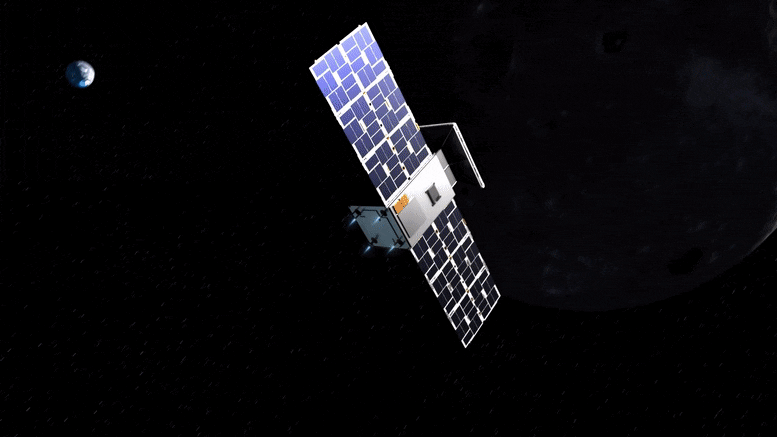

The Cislunar Autonomous Positioning System Technology Operations and Navigation Experiment, or CAPSTONE, is a CubeSat that will fly a unique orbit around the Moon intended for NASA’s future Artemis lunar outpost Gateway. Its six-month mission will help launch a new era of deep space exploration. Credit: NASA Ames Research Center
NASA’s Cislunar Autonomous Positioning System Technology Operations and Navigation Experiment (CAPSTONE) successfully completed its third trajectory correction maneuver (TCM) on Monday, July 25. CAPSTONE is taking a long but fuel-efficient route to the Moon, flying about 958,000 miles (1.54 million kilometers) from Earth before looping back around to its near rectilinear halo orbit (NRHO).
CAPSTONE launched on June 28, followed by successful deployment and the start of spacecraft commissioning on July 4. It successfully completed its first trajectory correction maneuver on July 7 and its second on July 12.
CAPSTONE will fly in a unique, halo-shaped orbit around the Moon before the orbit is used by Gateway, NASA’s future lunar outpost for our Artemis program. The CubeSat will come within 1,000 miles of one lunar pole on its near pass and 43,500 miles from the other pole at its peak every seven days, requiring less propulsion capability for spacecraft flying to and from the Moon’s surface than other circular orbits. It’s a six-month mission that will help launch a new era of exploration. Credit: NASA’s Ames Research Center
At the completion of the third trajectory correction maneuver, CAPSTONE was about 780,000 miles (1.25 million kilometers) from Earth and was moving at about 595 miles per hour (about 267 meters per second). It will perform several such maneuvers during its journey to lunar orbit to refine its trajectory to the Moon.
CAPSTONE remains on track to arrive to its lunar orbit on November 13, 2022.